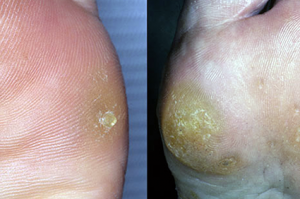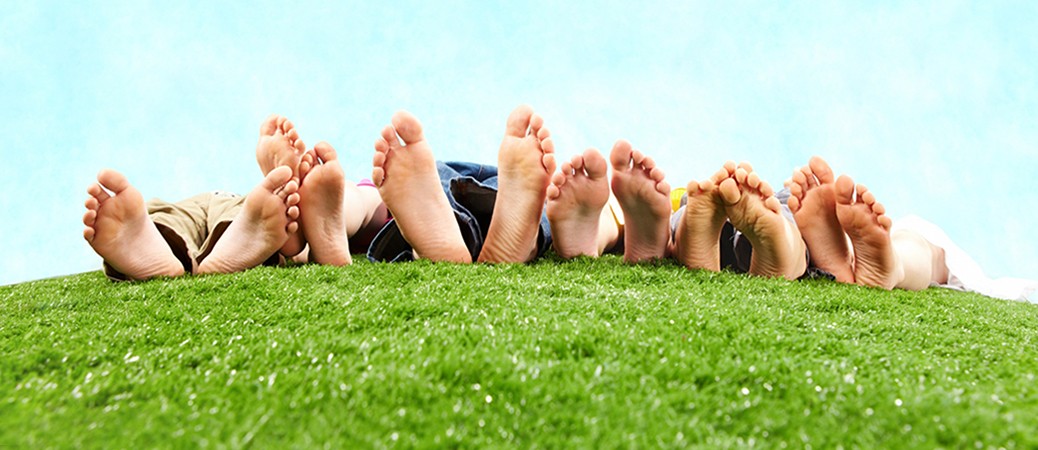Callus and corns
Callus and corns are areas of thick, hardened, dead skin. They form to protect the  skin and structures under the skin from pressure, friction, and injury. They may appear grayish or yellowish, be less sensitive to the touch than surrounding skin, and feel bumpy. Callus on the feet of an active person are normal. Callus and corns become a problem when they grow large enough to cause pain.
skin and structures under the skin from pressure, friction, and injury. They may appear grayish or yellowish, be less sensitive to the touch than surrounding skin, and feel bumpy. Callus on the feet of an active person are normal. Callus and corns become a problem when they grow large enough to cause pain.
Callus generally forms on the feet, although they may form wherever there is pressure on the skin, such as on the hands, knees or elbows.
Callus on the feet generally form on the ball of the foot, the heel, and the underside of the big toe. They often form where the foot and the beginning of the toe meet (under the end of the metatarsal bone). Corns generally are found where toes rub together. Corns have an inner core that can be soft or hard. A soft corn is found between toes (usually the fourth and fifth toes). A hard corn is often found over a bony part of a toe (usually the fifth toe).
Callus on the hands generally form at the base of the fingers. They usually are not painful and may be useful. For example, a carpenter might develop callus that protect his or her hands from scrapes and cuts while working. A tennis player might develop callus on the palm that protect his or her hand from the pressure and friction of handling a tennis racquet.
These thickenings of the skin can need professional help. It is beneficial to use mild abrasion, or filing, to reduce callus. Protective padding can also be useful. It is not a good idea to use sharp instruments to cut at your own skin, or used medicated ‘corn removal’ products that contain acid, particularly if you have poor circulation, or have diabetes.
If you have callus or corns, our contact numbers can be found here.
We also have a range of other therapies on offer at our Healthpoint premises in Ainsdale, Formby and Maghull.
To visit the Healthpoint website click here.
